The toolsPoco Kelly Acurizer My first tool was the Poco Kelly Acu'rizr bought back in 2007.
I casually played with it for a while, but always put a serious test on the back burner (until now)
Poco Kelly
PO Box 1170
Cortaro, AZ 85652
http://www.leverguns.com/store/acurizer.htm
Poco's kit is the simplest and least expensive.
Bullet expansion is accomplished by striking the nose form rod with a hammer.
My expander has two sizes; .223 and .224 that can be set by choosing which end of the tool to use.
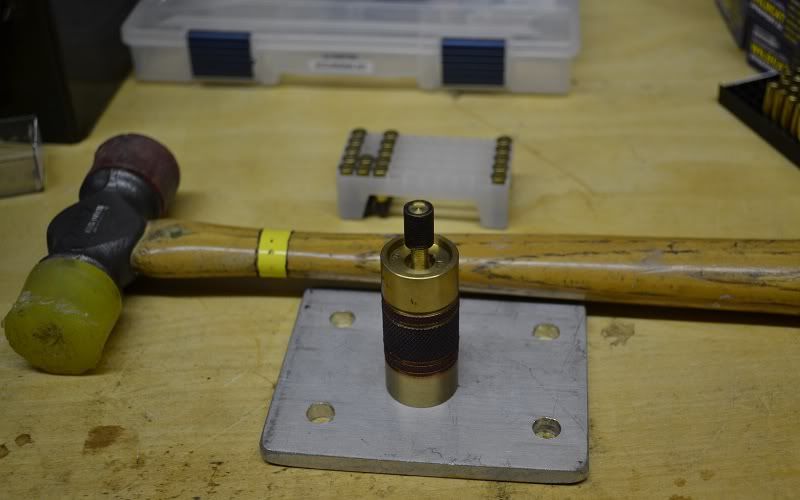
When I bought the kit, three forming rods were available.
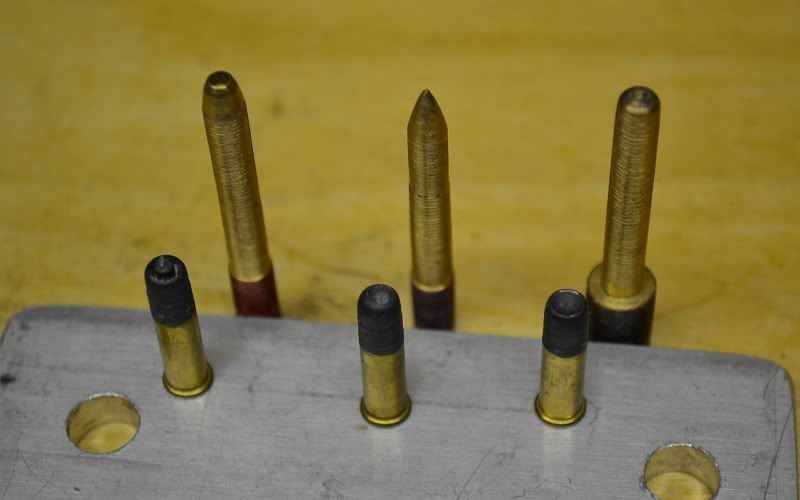
1. Scorpion - An exaggerated hollow point with a central post (much like Federal Hydra-Shock pistol bullets)
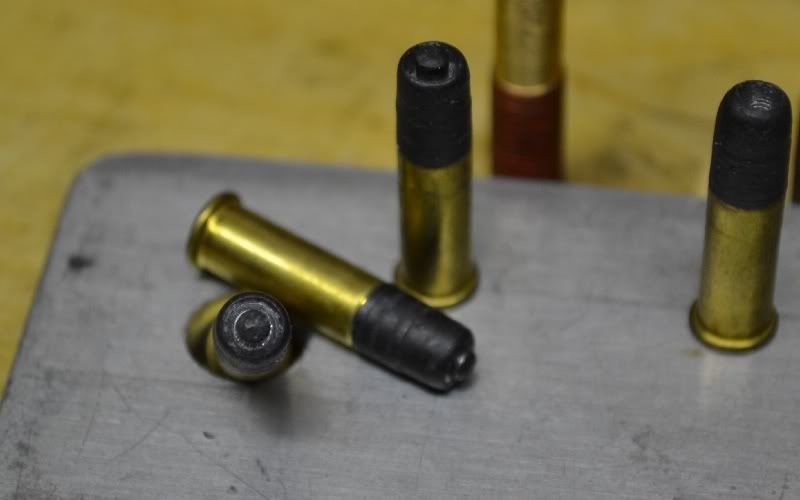
Winchester Wildcat Dynapoint with exaggerated modification (pounded too hard)
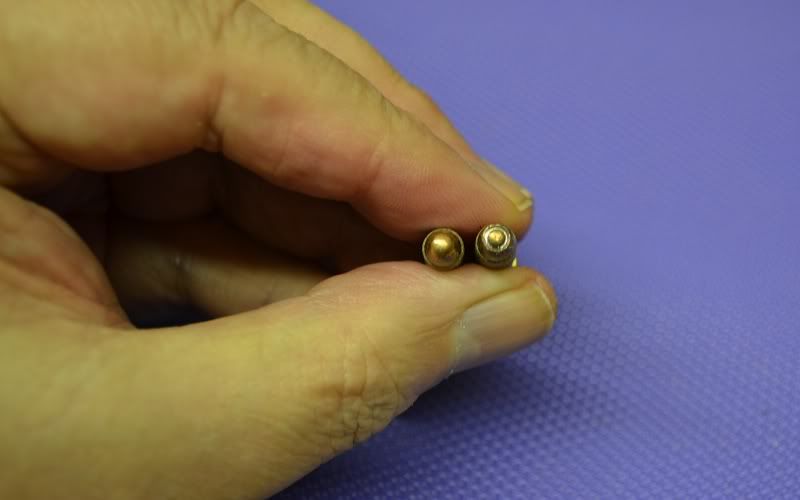
CCI Mini-Mag with proper Scorpion HP
2. Hollow Point - A wide gaping cone shape.
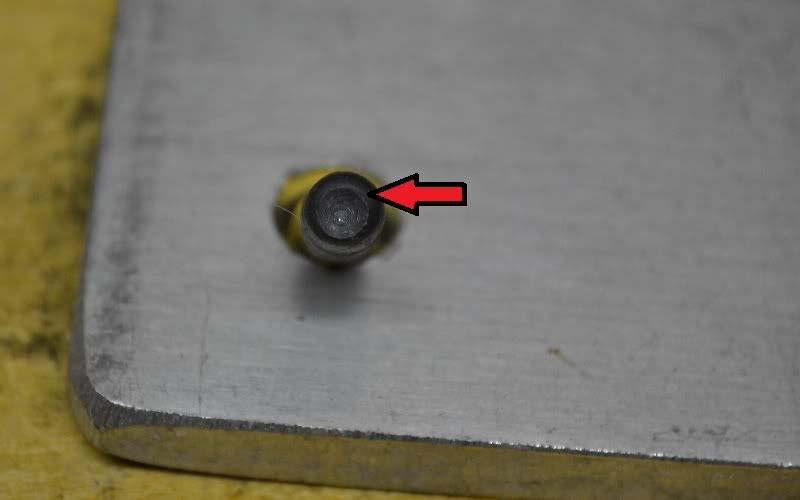 Note the off center HP.
Note the off center HP. When modifying existing hollow point ammunition, the forming punch works well.
However, some of the holes made into standard round nose bullets are off center as seen above.
3. Nasty Nose - A dished out flat point
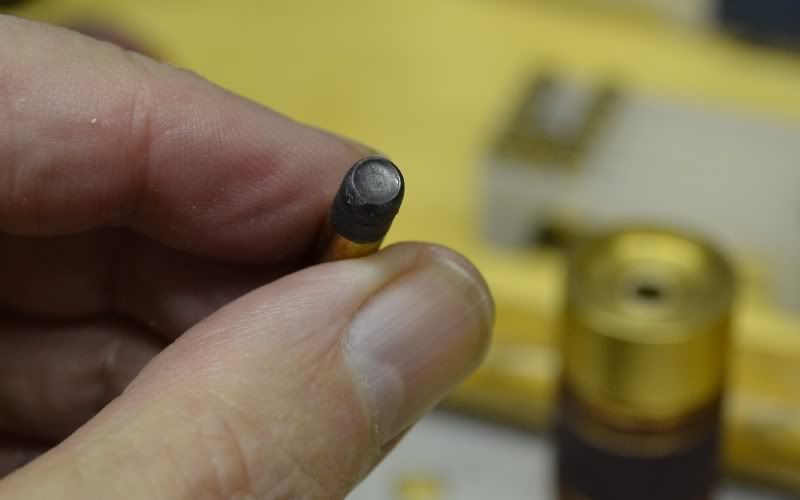
Again, this is an exaggerated modification cause by striking the forming rod too hard.
One of the problems that I encountered with the Kelly kit, was my ability to strike the forming rod consistently.
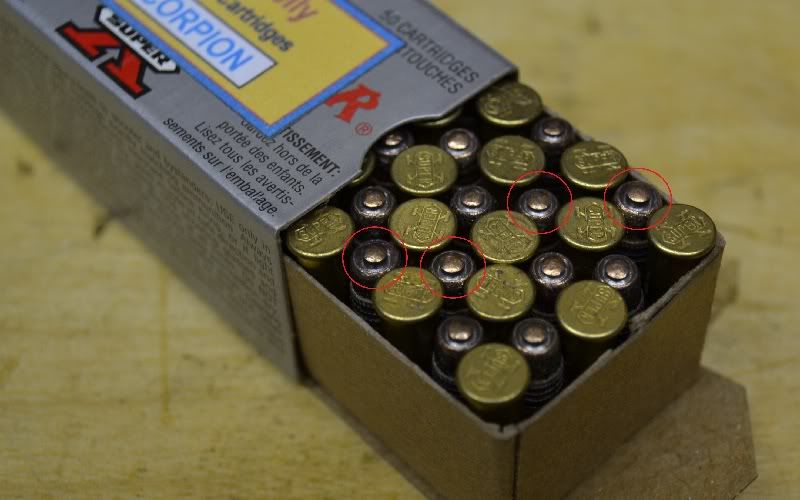
Note different sizes of HP size.
This can (and will be) easily addressed, by cutting a short length of metal tubing to stop the forming rod at the same place each time.
I have a small arbor press that will take the place of the hammer.
A reloading press could also be used by fabricating a pair of stout metal disks to place above and below the tool.
To be fair to Poco, I have not contacted him about the Hollow Point pin, and have no reason to believe that he would not make things right.
According to his latest advertisement, he has made a lot of new modifications to his tools, and is well worth a look.
Steve